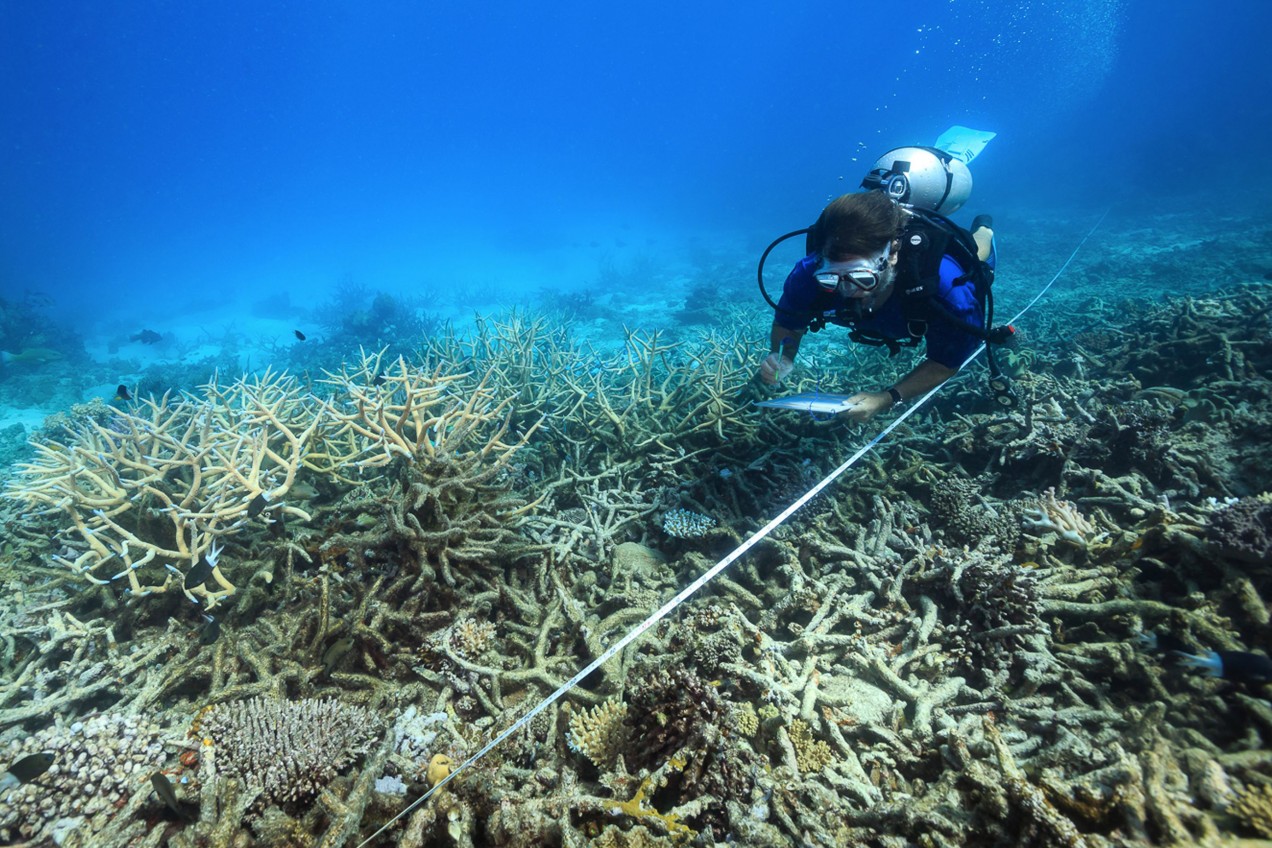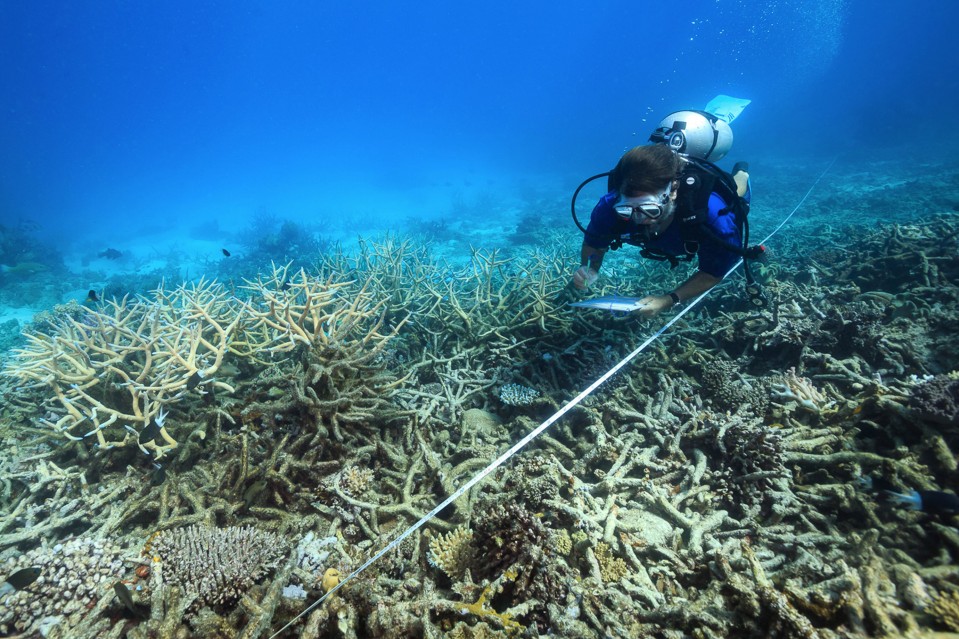

Sustainable Energy
Scientists Consider Brighter Clouds to Preserve the Great Barrier Reef
As bleaching devastates the critical ecosystem for a second year in a row, marine scientists are getting desperate.

A group of Australian marine scientists believe that altering clouds might offer one of the best hopes for saving the Great Barrier Reef.
For the last six months, researchers at the Sydney Institute of Marine Science and the University of Sydney School of Geosciences have been meeting regularly to explore the possibility of making low-lying clouds off the northeastern coast of Australia more reflective in order to cool the waters surrounding the world’s biggest coral reef system.
During the last two years, the Great Barrier Reef has been devastated by wide-scale bleaching, which occurs as warm ocean waters cause corals to discharge the algae that live in symbiosis with them. Last year, as El Niño events cranked up ocean temperatures, at least 20 percent of the reef died and more than 90 percent of it was damaged.
The Australian researchers took a hard look at a number of potential ways to preserve the reefs. But at this point, making clouds more reflective looks like the most feasible way to protect an ecosystem that stretches across more than 130,000 square miles, says Daniel Harrison, a postdoctoral research associate with the Ocean Technology Group at the University of Sydney. “Cloud brightening is the only thing we’ve identified that’s scalable, sensible, and relatively environmentally benign,” he says.
They’re one of several research groups that have started to explore whether cloud brightening, generally discussed as a potential tool to alter the climate as a whole, could be applied in more targeted ways. All the scientists involved stress that the research is in its infancy. No one has tested a system for cloud brightening at all, much less in geographically focused applications.
British scientist John Latham first proposed the idea as a potential way of controlling global warming in Nature nearly 30 years ago. The theory is that fleets of ships could spray tiny salt particles, generated from sea water, toward the low-lying marine clouds that hug the coasts of several continents. That would provide the nuclei needed to induce additional droplet formation, expanding the total surface area of the clouds. The resulting dense, white clouds should reflect more heat back into space. A 2012 study led by Latham at the University of Manchester found that the approach could offset the heating that would result if carbon dioxide doubled in the atmosphere.
The Marine Cloud Brightening Project, a collaboration between a group of Silicon Valley researchers and University of Washington climate scientists, has done the most advanced work on the idea to date. The team in Sunnyvale, California, has spent the last seven years developing a nozzle that they believe can spray salt particles of just the right size and quantity to alter the clouds. They’re attempting to raise several million dollars to build full-scale sprayers, in hopes of eventually conducting small-scale field trials at some flat point along the Pacific coastline—ideally a place with onshore winds, low-lying clouds, and open-minded neighbors.
They’re among a handful of researchers looking to conduct limited outdoor experiments to explore the feasibility and risks of such approaches (see “The Growing Case for Geoengineering”). But while the prospect of using geoengineering to ease global warming on a large scale poses intractable governance issues, using the technology to address a more localized problem could be more feasible, at least politically.
Coral reefs are crucial parts of the ocean ecosystem, providing hunting grounds and homes for thousands of species. They also generate nearly $200 billion in economic value annually, through tourism, fisheries, and other activity, according to one study. Reefs, however, have been hard hit worldwide by ocean acidification, pollution, overfishing, and other environmental stresses. The Great Barrier Reef has shrunk dramatically during the last three decades.
That makes it increasingly urgent to seriously explore ways of preserving the reefs, even “fairly out-there, grand schemes,” Harrison says. Next month, he plans to start computer climate modeling to explore whether cloud brightening could make a big enough temperature difference to help. The group plans to collaborate on the research with the Marine Cloud Brightening Project team.
Coral reefs aren’t the only ecosystem that some scientists believe might need help from geoengineering. Researchers at the University of California, the Carnegie Institution, Stanford University, and Oregon State University have begun a larger project exploring, among other things, how climate change is affecting or will affect the last remaining stands of coast redwoods.
They're the world's tallest trees, and rely on coastal fog for around half of their moisture. But Northern California fog levels have dropped more than 30 percent since the early 20th century, a decline linked to urbanization and climate change. The impact has been limited to date, but fear is growing that these old-growth stands could be wiped out if the trends accelerate.
Elliott Campbell, an associate professor of environmental engineering at UC Merced, says the group has held early talks with the Marine Cloud Brightening Project about whether the technique could generate more low-lying clouds to help feed moisture to the redwoods. “If we could artificially produce fog on summer mornings, and that could help us buy the redwoods more time as we shift to a less carbon-intensive economy, that’s potentially a good thing,” Campbell says.
Ken Caldeira, a prominent climate scientist at the Carnegie Institution who has modeled the potential of cloud brightening, says the idea of localized geoengineering is worth exploring. But he’s not convinced that cloud brightening could produce a substantial climate effect at such a limited level. Below a certain geographic footprint, probably around 10,000 square miles, it might be difficult to produce a big enough change in cloud density to add up to much of a difference, he says. He’s specifically skeptical that it would work at the Great Barrier Reef.
“I just don’t think there are enough clouds of the right type there that would be susceptible to marine cloud brightening,” he says.
The University of Sydney’s Harrison is aware of the concerns Caldeira raises and intends to look at these issues closely in his feasibility research. But at a first pass, he believes there could be sufficient marine clouds to help preserve the Great Barrier Reef.
In any case, he hopes so, because nothing else looks particularly promising.